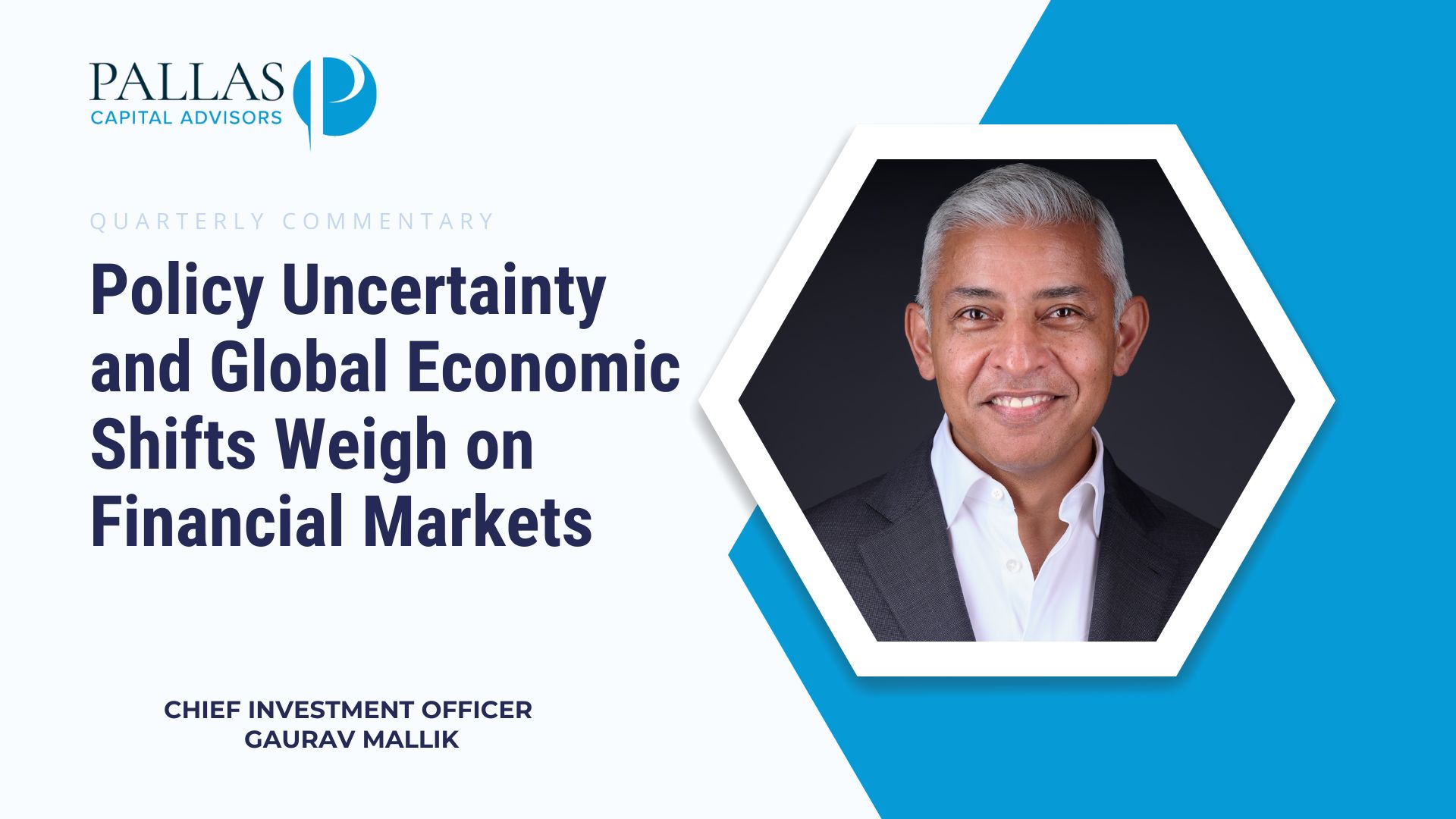The first quarter of 2025 was defined by heightened volatility, geopolitical tensions, and divergent regional performances. While certain sectors and markets showed resilience, others faced significant headwinds due to policy uncertainty and global economic shifts.
Market Performance:
- S&P 500: -4.25%
- Russell 1000 -4.53%
- Nasdaq Composite: -8.14%
- Russell 2000: -9.51%
- ACWI -0.94%
- ACWI Ex-US 6.31%
- US Aggregate Bond 2.74%
US Stocks started the quarter with strong momentum, with the S&P 500 hitting a record high by mid-February. However, the Nasdaq was never able to rise above its December 2024 record. Stocks ended the quarter on a weak note, with the S&P 500 dipping into correction territory before finishing just under 10% from its February peak, while Nasdaq was off nearly 16% from its record. The weakness was driven in large part by growth fears that followed uncertainty around tariffs and the broader Trump policy agenda. A mix of softer economic data, concerns about persistent disinflation, and emerging doubts around the durability of the AI growth narrative also played a role in the sharp sell-off during the latter half of the quarter. This quarter also featured some increasingly hawkish Fed commentary, though the Fed’s latest projections continue to show expectations for at least two rate cuts this year.
As the quarter progressed, there were also more arguments that the US Exceptionalism narrative is over. Big tech leadership faltered, with Mag 7 stocks on average down 25% from their 52-week highs and accounting for 96% of the S&P 500 decline YTD. The group’s weakness was tabbed in part to emerging cracks in the AI secular growth narrative. Particularly after the January DeepSeek selloff, growing fears around the size of AI-related capex across the major hyper-scalers, and a slowdown in cloud spend as AI models become cheaper and more efficient.
Stock weakness spread beyond big tech as growth fears and tariff uncertainty became the key overhang for the broader market. Strategists from Goldman Sachs, RBC Capital Markets, and Barclays were among those to cut 2025 S&P 500 price targets in March, citing factors including higher tariffs, weaker economic growth, and higher inflation.
Tariffs were the biggest story in the first quarter. President Trump ramped up tariff threats (particularly in March) after delaying some proposed tariffs on Canada and Mexico earlier in the quarter. In mid-March, Trump said April 2nd would be “Liberation Day,” when he would announce sweeping reciprocal tariffs on trading partners and also announced 25% tariffs on auto imports. Markets were originally supported by the idea that tariffs were threats only to help drive better trade deals, though that narrative fell apart toward the end of the quarter amid growing uncertainty whether April 2nd would be a clearing event.
Survey data also reflected a cautious turn for both consumers and businesses during the quarter. March Michigan Consumer Sentiment fell all three months in the quarter to lowest levels since late 2022, while one-year inflation expectations jumped to 5% and 5Y inflation expectations of 4.1% marked a 32-year high. March Consumer Confidence also fell for four-straight months to the lowest level since early 2021, including the expectations index hitting a 12-year low. March flash manufacturing PMI swung back into contraction and cost pressures increased at sharpest pace in 23 months in the composite reading, while the report’s expectations for the year-ahead fell to the second lowest level since late 2022.
However, hard data held up better through the quarter supporting the underlying strength that has existed in the U.S. economy. December nonfarm payrolls posted the best print since January 2023, while the attractive valuations, comprising greater exposure to defensive sectors with less tech concentration, and being seen as potential beneficiaries of increased defense and infrastructure spending.
Fixed income also made a positive return for the quarter. Treasuries rallied sharply with the biggest gains in intermediate (3-7 years) maturities. The 2Y yield fell 35 bp to under 3.90% and ended the quarter near the lowest levels since October. The 10Y also fell over 35 bp to around 4.20%.
Outlook – More Uncertainty
Following the end of the quarter, the most dramatic market movement came when President Donald Trump announced sweeping tariff increases. The announcement sparked a historic two-day sell-off, with over $6.6 trillion wiped from U.S. equity markets. International markets were not immune to the sell-off giving up their year-to-date gains. Fixed income also came under pressure with treasury yields increasing and credit spreads widening.
The market has subsequently recovered some of the losses, but investor sentiment remains cautious. While a pause has been announced for some tariffs and early first quarter corporate earnings and recent economic data have been resilient, global uncertainty, particularly around tariffs, monetary policy, and geopolitical development, continues to cloud the outlook.
Key drivers of market direction in the coming months:
- Monetary Policy Adjustments: Will the Fed pivot again with rate cuts?
- Clarity on Tariffs: Businesses await more details on trade policy enforcement.
- Earnings Season: Investors will scrutinize Q1 results and guidance closely for signs of economic resilience.
- Geopolitical Risk: Ongoing tension in Eastern Europe and the Middle East adds to market uncertainty.
Market sentiment remains fragile, but signs of policy moderation and resilient key economic data suggest that the worst may be priced, especially if policy signals further stabilize. However, as the financial markets still face a high level of uncertainty, recommended actions include the following:
- Stick to personal financial plan and risk appropriate allocations
- Retain a long-term view focused on public equity investment in high quality businesses
- Diversify U.S. equity exposure with an increased allocation to international stocks
- Retain a defensive stance on public fixed income given the elevated risk of inflation and increased potential for recession
- Improved opportunity for deployment of new capital investment in the private markets taking advantage of market dislocations and secondary discounts driven by liquidity needs


